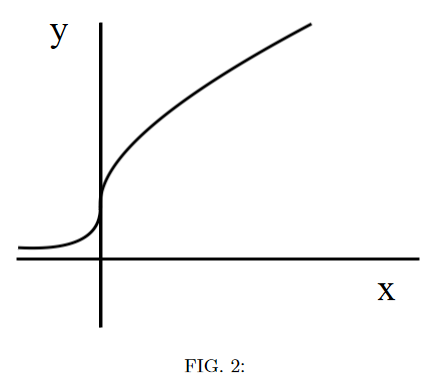Position XY 1b#
Part 1#
A particle follows the trajectory shown in the figure without stopping along it’s path. What can you conclude aboout the particle’s motion?

Answer Section#
At \(x = 0\), the particle’s instantaneous velocity points in either the \(\hat{\imath}\) or the \(-\hat{\imath}\) direction.
At \(x = 0\), the particle’s instantaneous velocity points in either the \(\hat{\jmath}\) or the \(-\hat{\jmath}\) direction.
At \(x = 0\), the particle’s instantaneous acceleration is zero.
At \(x = 0\), the particle’s instantaneous acceleration non-zero.
No information about the particle’s velocity or acceleration can be found from its trajectory.
Attribution#
Problem is licensed under the CC-BY-NC-SA 4.0 license.

